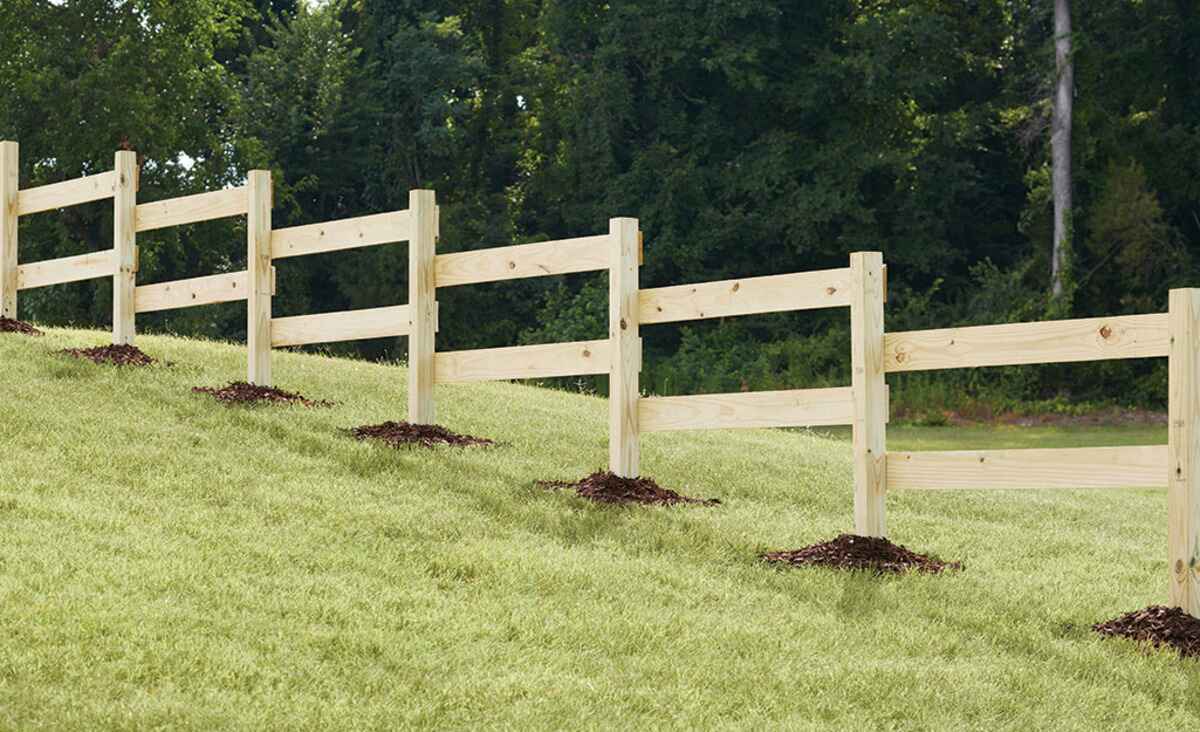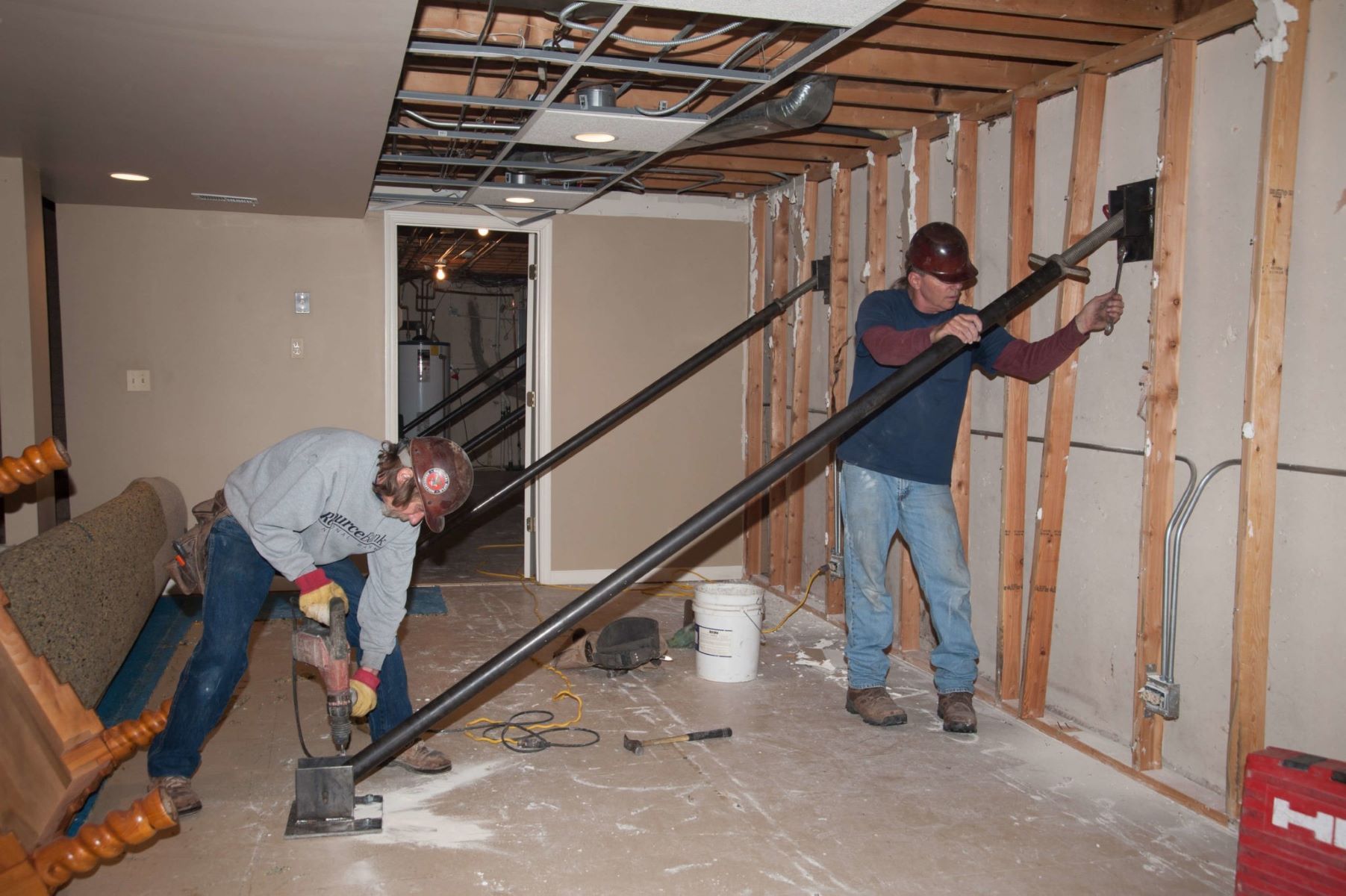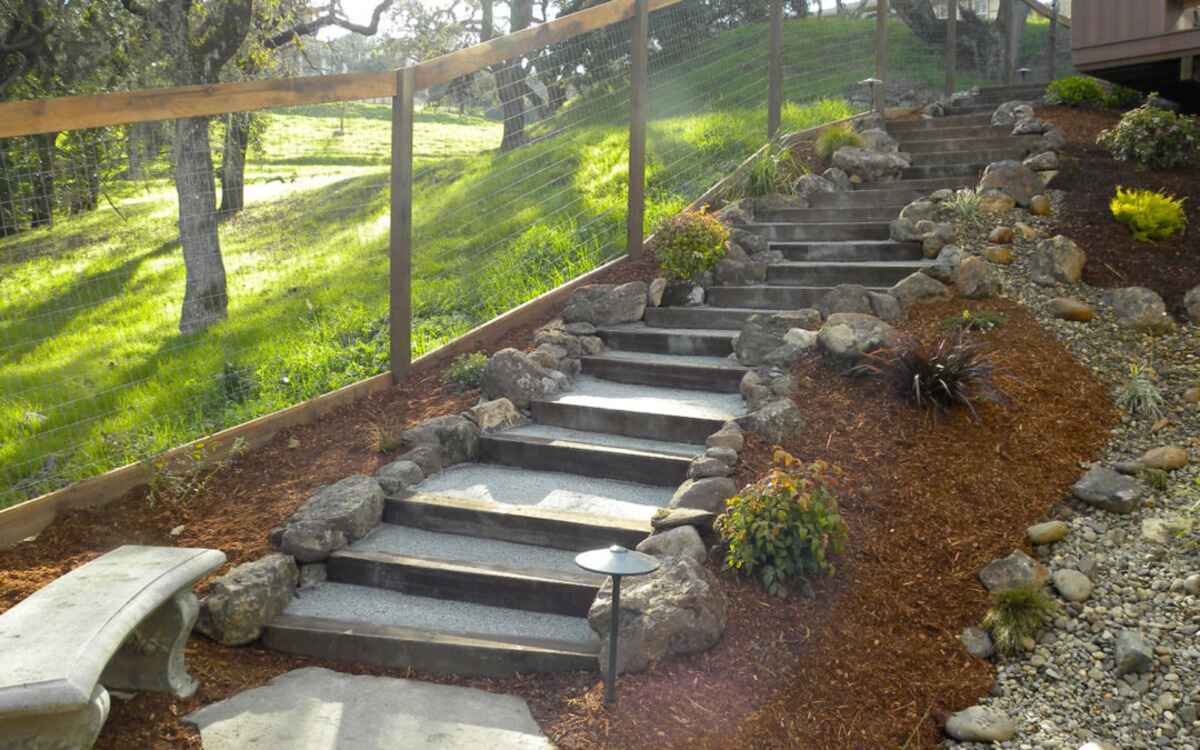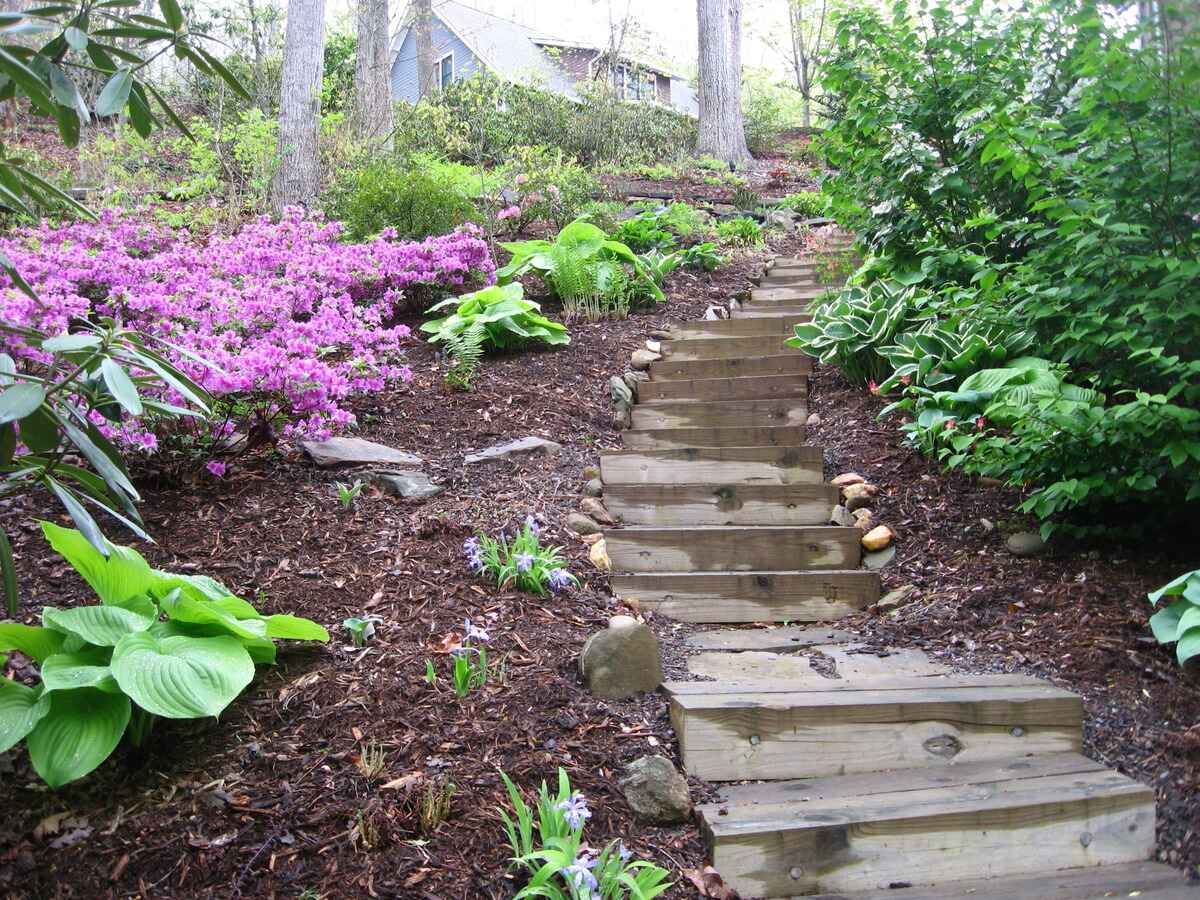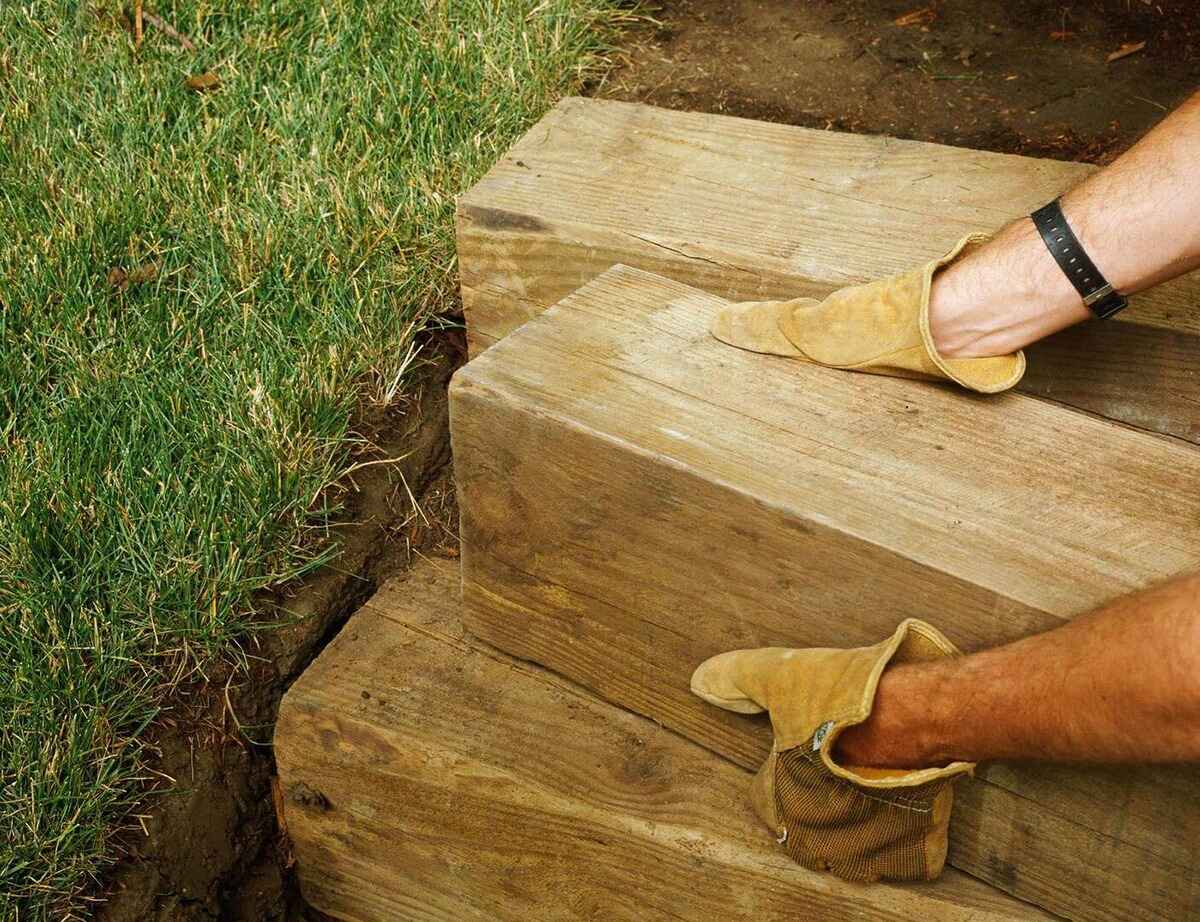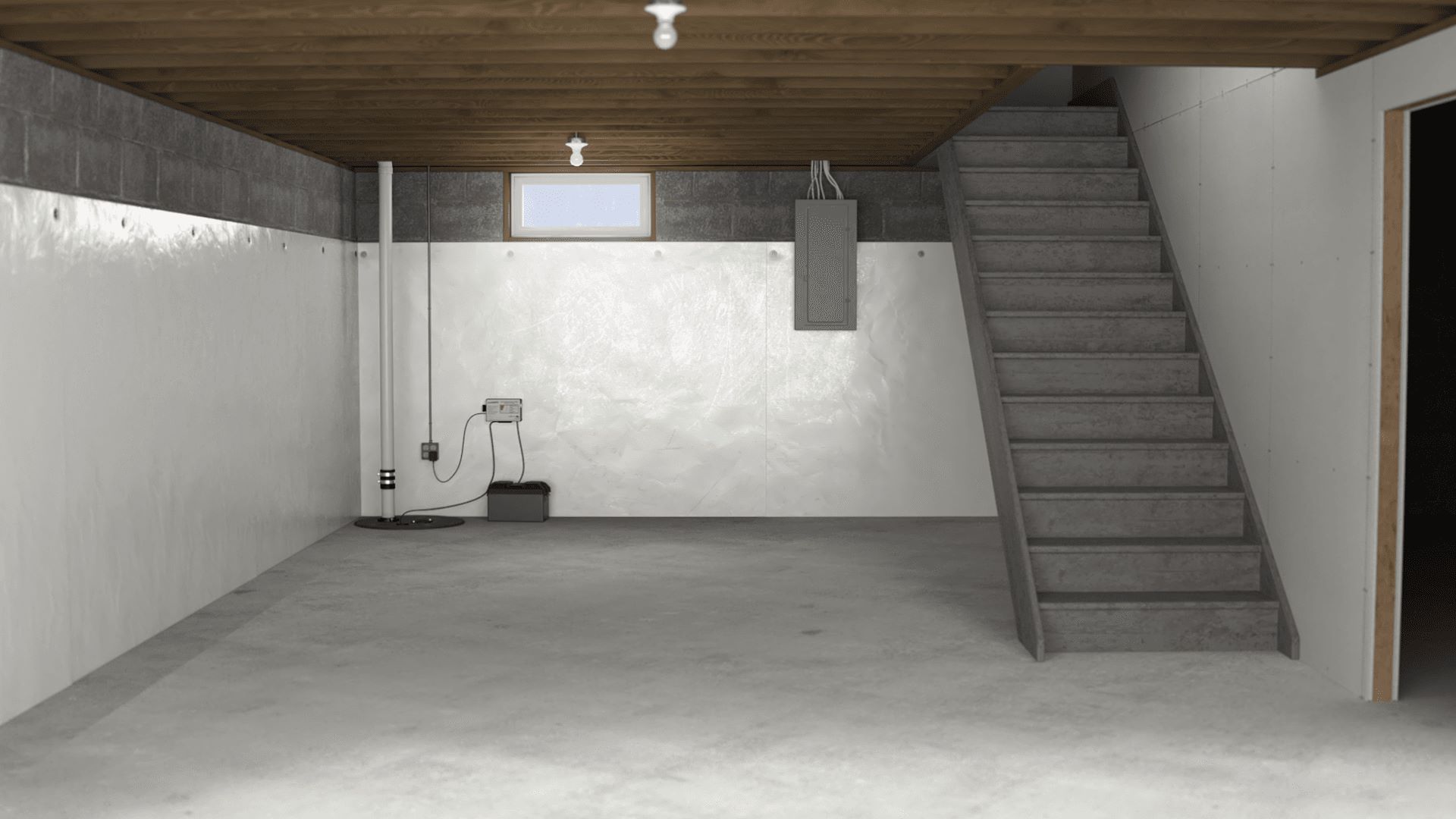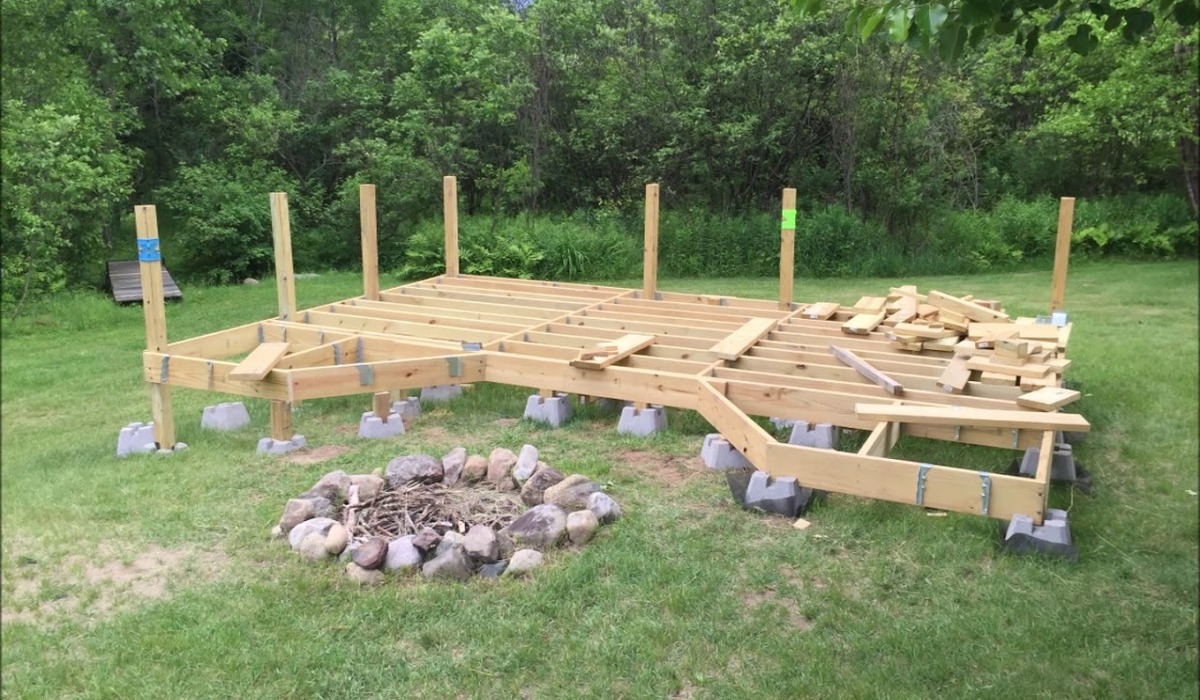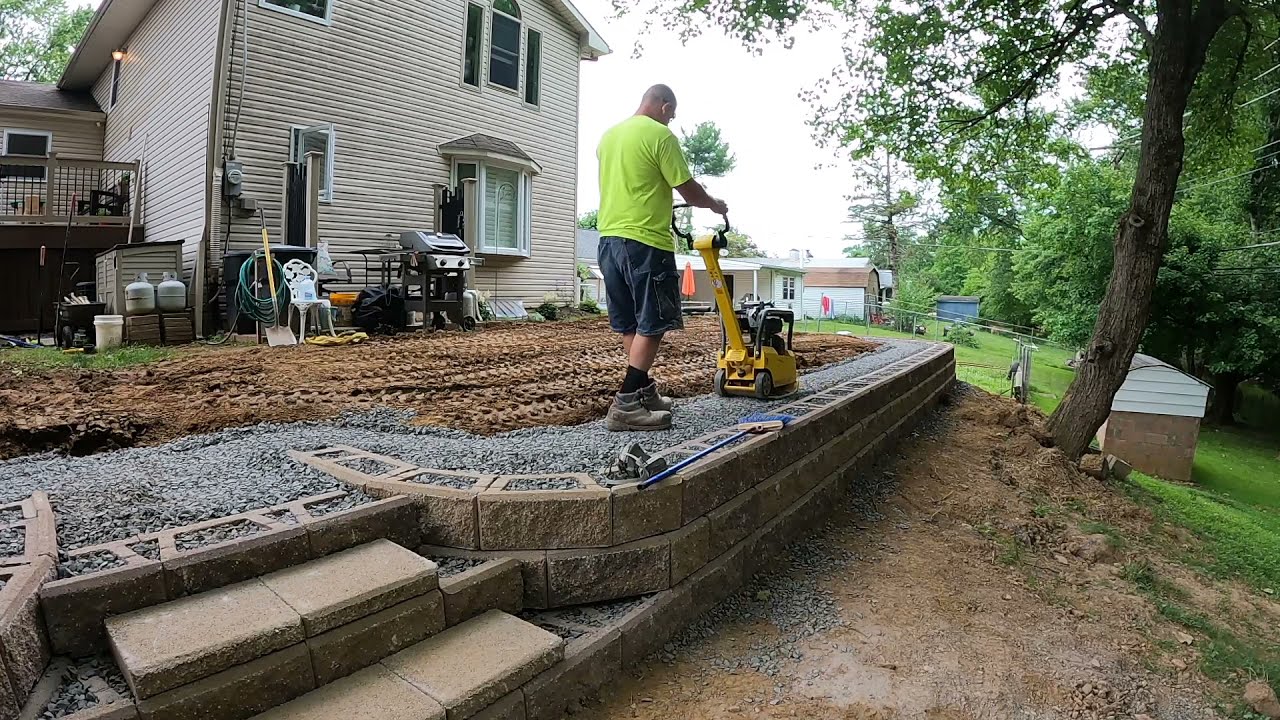Home>Create & Decorate>DIY & Crafts>Sloped Shed Foundation: A DIY Guide
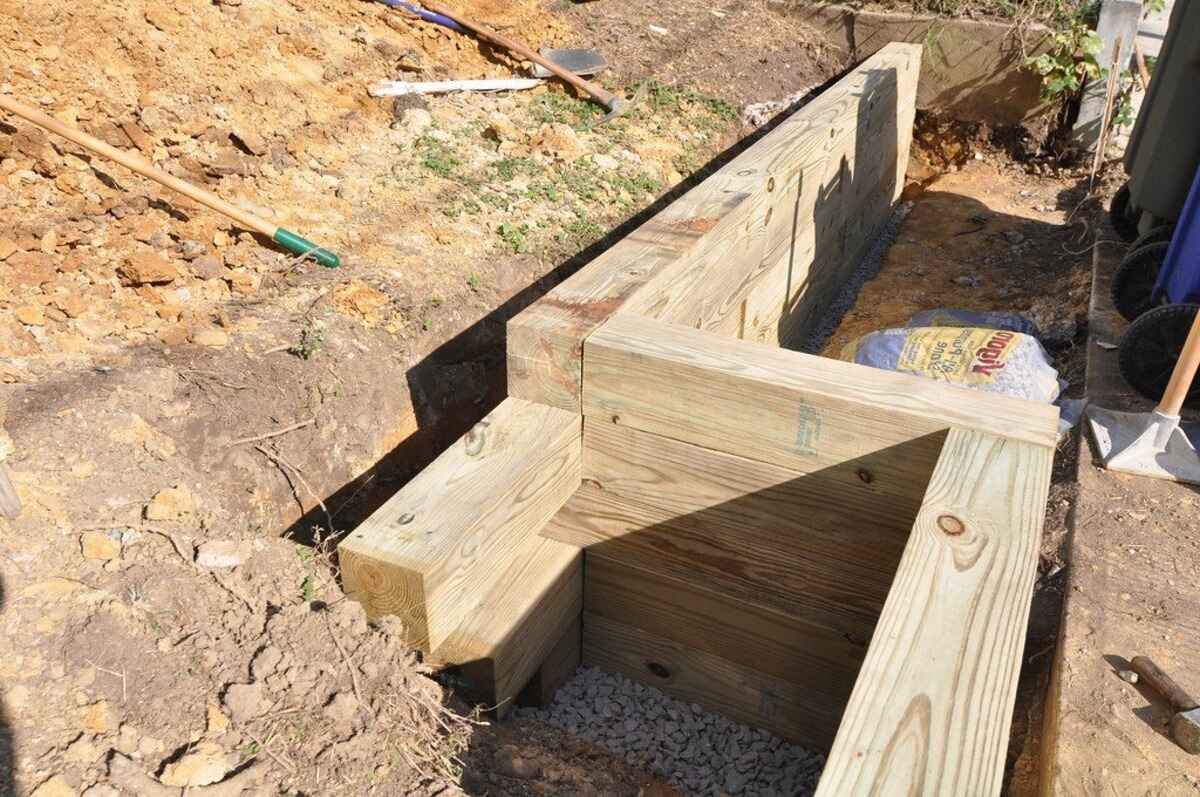

DIY & Crafts
Sloped Shed Foundation: A DIY Guide
Published: February 29, 2024

Content Creator specializing in woodworking and interior transformations. Caegan's guides motivate readers to undertake their own projects, while his custom furniture adds a personal touch.
Learn how to build a sloped shed foundation with our comprehensive DIY guide. Perfect for DIY & Crafts enthusiasts looking for a sturdy and reliable foundation solution.
(Many of the links in this article redirect to a specific reviewed product. Your purchase of these products through affiliate links helps to generate commission for Twigandthistle.com, at no extra cost. Learn more)
Introduction
Building a sloped shed foundation is a crucial step in ensuring the stability and longevity of your outdoor structure. Whether you're planning to construct a garden shed, a storage unit, or a workshop, a well-built foundation is essential for withstanding the elements and providing a level and secure base for your shed. This comprehensive DIY guide will walk you through the process of creating a sloped shed foundation, offering valuable insights and practical tips to help you achieve a successful outcome.
A sturdy foundation not only supports the weight of the shed but also helps to prevent moisture-related issues such as rot and decay. By following the steps outlined in this guide, you'll be able to create a durable and reliable foundation that will serve as a solid base for your shed for years to come.
From selecting the right location to gathering the necessary materials and tools, each stage of the process is crucial in ensuring the overall stability and functionality of the foundation. By understanding the importance of proper planning and execution, you can embark on this DIY project with confidence, knowing that you're equipped with the knowledge and guidance needed to achieve a professional-quality result.
Throughout this guide, you'll discover the key considerations involved in building a sloped shed foundation, including the significance of site preparation, the selection of suitable materials, and the essential steps for leveling and finishing the foundation. By following these instructions and recommendations, you'll be well on your way to creating a robust and resilient foundation that meets the specific requirements of your shed and the environmental conditions of your location.
As you embark on this DIY journey, remember that the foundation serves as the backbone of your shed, providing the necessary support and stability for the entire structure. With careful planning, attention to detail, and a willingness to tackle each step with precision, you can successfully build a sloped shed foundation that not only meets your immediate needs but also stands the test of time.
Read more: How To Build Shed Foundation
Planning and Preparation
Before embarking on the construction of a sloped shed foundation, thorough planning and meticulous preparation are essential for ensuring a successful outcome. This initial phase sets the stage for the entire project, laying the groundwork for a sturdy and durable foundation that will support your shed for years to come.
Site Assessment
The first step in the planning process involves conducting a comprehensive assessment of the chosen site. Take into account the natural slope of the land, drainage patterns, and the presence of any obstacles such as trees or large rocks. Assessing these factors will help determine the most suitable location for the shed and the optimal orientation for the sloped foundation.
Shed Requirements
Consider the specific requirements of the shed that will be constructed on the foundation. Take note of the shed's dimensions, weight, and intended use. These details will influence the size and design of the foundation, ensuring that it is capable of supporting the structure and accommodating its intended purpose.
Local Regulations
Check with local authorities or homeowner associations to determine if there are any regulations or permits required for building a shed and its foundation. Understanding and adhering to these guidelines is crucial to avoid potential legal issues and ensure compliance with local building codes.
Read more: How To Build A Shed On A Slope
Material Selection
Research and select the appropriate materials for the foundation, taking into consideration factors such as durability, cost, and compatibility with the local climate. Common materials for sloped shed foundations include pressure-treated lumber, concrete blocks, gravel, and compacted soil. Choosing high-quality materials is essential for the longevity and stability of the foundation.
Tool Preparation
Compile a list of the necessary tools and equipment required for the construction process. This may include shovels, a level, a wheelbarrow, a tamper, a tape measure, and safety gear such as gloves and protective eyewear. Ensuring that all tools are readily available and in good working condition will streamline the construction process.
Budgeting and Timeline
Establish a budget for the project, factoring in the cost of materials, tools, and any professional assistance that may be required. Additionally, create a realistic timeline for the construction process, accounting for potential weather-related delays and the availability of labor and equipment.
By meticulously planning and preparing for the construction of a sloped shed foundation, you can set the stage for a smooth and efficient building process. This proactive approach will help mitigate potential challenges and ensure that the foundation is tailored to meet the specific needs of your shed and the environmental conditions of the site.
Choosing the Right Location
Selecting the optimal location for your shed's sloped foundation is a critical decision that significantly impacts the overall stability and functionality of the structure. When choosing the right location, several key factors must be carefully considered to ensure the long-term success of the foundation and the shed it supports.
Read more: How To Build A Single Slope Shed Roof
Natural Slope and Drainage
Assess the natural slope of the land to identify potential areas that offer adequate drainage and minimize the risk of water accumulation around the shed. Ideally, the chosen location should have a gentle slope that allows for proper water runoff, preventing moisture-related issues such as pooling and erosion. Avoid areas with significant inclines or depressions that could impede the effectiveness of the sloped foundation.
Proximity to Utilities and Accessibility
Consider the proximity of the chosen location to utilities such as electricity, water, and drainage systems. Additionally, assess the accessibility of the site, ensuring that it allows for convenient entry and exit when transporting materials and equipment for construction. Choosing a location that is easily accessible can streamline the building process and future maintenance tasks.
Sunlight and Surroundings
Evaluate the exposure to sunlight and the surrounding environment when selecting the location for the shed's foundation. Opt for a site that receives ample natural light and is free from obstructions that could potentially hinder the shed's functionality. Additionally, consider the visual impact of the shed within its surroundings, aiming to integrate it harmoniously with the landscape.
Zoning and Property Boundaries
Check local zoning regulations and property boundaries to ensure compliance with any restrictions related to the placement of structures on your property. Understanding these regulations is crucial for avoiding potential legal issues and ensuring that the shed's location aligns with the designated building areas on your property.
Shed Orientation and Functionality
Determine the optimal orientation of the shed within the chosen location, taking into account factors such as prevailing winds, desired views, and the intended use of the shed. Orienting the shed to maximize natural light and ventilation can enhance its functionality and overall appeal, making it a more inviting and practical space.
By carefully considering these factors and selecting the right location for your shed's sloped foundation, you can lay the groundwork for a durable and resilient structure. This thoughtful approach ensures that the foundation is strategically positioned to support the shed while harmonizing with the natural features and functional requirements of your property.
Gathering Materials and Tools
Gathering the necessary materials and tools is a crucial step in preparing for the construction of a sloped shed foundation. By ensuring that you have all the required items readily available, you can streamline the building process and minimize potential delays. Here's a comprehensive list of materials and tools needed for this project:
Materials
-
Pressure-Treated Lumber: Select high-quality pressure-treated lumber for constructing the framework of the foundation. The lumber should be resistant to decay and insect damage, ensuring the longevity of the foundation.
-
Concrete Blocks or Pavers: These will be used to create a stable base for the foundation, providing support and elevation on the sloped terrain.
-
Gravel or Crushed Stone: Utilize gravel or crushed stone to facilitate drainage and provide a solid, level surface for the foundation.
-
Landscape Fabric: This will help prevent weed growth and stabilize the underlying soil when placed beneath the gravel or crushed stone.
-
Fasteners and Hardware: Ensure you have the necessary screws, nails, and other fasteners to securely assemble the foundation components.
-
Concrete Mix: If your project requires the use of concrete, have an ample supply of concrete mix on hand.
Tools
-
Shovel: A sturdy shovel will be essential for excavating the foundation area and moving materials.
-
Level: Use a reliable level to ensure the foundation components are accurately positioned and aligned.
-
Wheelbarrow: This will facilitate the transportation of materials across the construction site, particularly useful for moving gravel and concrete.
-
Tamper: A tamper is necessary for compacting the gravel or crushed stone to create a stable base for the foundation.
-
Tape Measure: Accurate measurements are crucial for ensuring the foundation components are aligned and positioned correctly.
-
Circular Saw or Miter Saw: If cutting lumber to specific dimensions is required, a circular saw or miter saw will be indispensable.
-
Safety Gear: Prioritize safety by having gloves, protective eyewear, and appropriate footwear to safeguard yourself during the construction process.
By procuring these materials and tools in advance, you can set the stage for a smooth and efficient construction process. Having everything at your disposal will enable you to focus on the task at hand, ensuring that the sloped shed foundation is built with precision and durability.
Building the Foundation
Building the foundation of a sloped shed requires careful attention to detail and precise execution to ensure its stability and longevity. The following steps outline the process of constructing a durable and reliable foundation that will provide a solid base for your shed.
Excavation and Site Preparation
Begin by marking the perimeter of the foundation area, taking into account the slope of the land and the desired dimensions of the shed. Excavate the marked area, removing any vegetation, rocks, or debris to create a level surface for the foundation. Pay close attention to the slope of the terrain, as this will dictate the depth of excavation required to achieve a level base.
Framework Construction
Construct the framework of the foundation using pressure-treated lumber. The framework should be designed to accommodate the slope of the land, with the higher side of the foundation elevated to match the natural grade. Secure the lumber in place, ensuring that the framework is level and securely anchored to the ground.
Elevation and Support
Utilize concrete blocks or pavers to provide elevation and support for the foundation. These blocks should be strategically placed to compensate for the slope, ensuring that the shed will be level once installed. Take care to position the blocks securely and precisely, as they will serve as the primary support structure for the foundation.
Read more: How to Build a DIY Garage Foundation
Drainage Considerations
Incorporate proper drainage measures into the foundation design to prevent water accumulation and potential damage to the shed. This may involve creating a slight slope away from the shed, as well as incorporating gravel or crushed stone to facilitate water runoff and minimize moisture-related issues.
Stabilization and Compaction
Stabilize the foundation by layering gravel or crushed stone within the framework, ensuring a level and compacted surface. Use a tamper to compact the material, creating a stable base that can withstand the weight of the shed and the environmental conditions of the site.
Integration of Landscape Fabric
Lay landscape fabric over the compacted gravel or crushed stone to inhibit weed growth and further stabilize the foundation. This additional layer helps to maintain the integrity of the foundation and provides a barrier against unwanted vegetation.
By following these steps and paying close attention to the details of construction, you can build a sloped shed foundation that is structurally sound and capable of withstanding the challenges of its environment. Each phase of the building process contributes to the overall strength and stability of the foundation, ensuring that it serves as a reliable base for your shed for years to come.
Leveling and Finishing Touches
Once the framework and support structure of the sloped shed foundation are in place, the crucial step of leveling and adding finishing touches becomes paramount. This phase ensures that the foundation is not only structurally sound but also visually appealing and ready to support the shed effectively.
Leveling the Foundation
Using a reliable level, meticulously check the entire foundation to ensure that it is perfectly level and aligned. Adjust the placement of concrete blocks or pavers as needed to achieve a uniform surface. This meticulous leveling process is essential for guaranteeing the stability and integrity of the foundation, providing a solid base for the shed.
Adding Bracing and Reinforcement
Incorporate additional bracing and reinforcement as necessary to fortify the foundation against potential shifting or settling. This may involve securing the framework with diagonal braces or adding extra support to areas that experience greater pressure due to the slope of the land. By reinforcing the foundation, you can enhance its resilience and longevity.
Surface Finishing
Once the foundation is leveled and reinforced, consider adding a finishing layer to enhance its appearance and durability. This may involve applying a protective sealant to the pressure-treated lumber to safeguard it against moisture and decay. Additionally, consider adding a layer of decorative gravel or pavers around the perimeter of the foundation to create a polished and visually appealing border.
Final Inspection
Conduct a thorough final inspection of the completed foundation, paying close attention to the details of its construction. Check for any protruding nails or screws, loose components, or potential hazards that could affect the shed's installation. Address any minor imperfections or issues to ensure that the foundation is in optimal condition for supporting the shed.
Preparation for Shed Installation
As the finishing touches are applied, prepare the foundation for the installation of the shed. Clear the surrounding area of any debris, ensure that the access points are unobstructed, and have the necessary equipment and assistance ready for the shed assembly. By meticulously preparing the foundation for the shed installation, you can streamline the final phase of the project.
By focusing on leveling and adding finishing touches, you can elevate the quality and functionality of the sloped shed foundation, ensuring that it is well-prepared to support the shed effectively. This attention to detail and precision in the final stages of construction sets the stage for a successful and enduring foundation that will serve as a reliable base for your shed.
Conclusion
In conclusion, the construction of a sloped shed foundation is a pivotal undertaking that demands careful planning, meticulous execution, and a keen eye for detail. By embarking on this DIY journey with a clear understanding of the essential steps involved, you can lay the groundwork for a durable and resilient foundation that will serve as a solid base for your shed.
Throughout the planning and preparation phase, the significance of site assessment, shed requirements, local regulations, material selection, tool preparation, budgeting, and timeline was underscored. This proactive approach ensures that the foundation is tailored to meet the specific needs of the shed and the environmental conditions of the site, setting the stage for a smooth and efficient building process.
Choosing the right location for the shed's foundation was emphasized, highlighting the importance of considering natural slope and drainage, proximity to utilities and accessibility, sunlight and surroundings, zoning and property boundaries, as well as shed orientation and functionality. This thoughtful selection process ensures that the foundation is strategically positioned to support the shed while harmonizing with the natural features and functional requirements of the property.
The comprehensive list of materials and tools required for the construction process was detailed, providing a clear roadmap for gathering the necessary resources. This proactive approach ensures that everything is readily available, enabling a focused and efficient construction process.
The construction phase, including excavation and site preparation, framework construction, elevation and support, drainage considerations, stabilization and compaction, and integration of landscape fabric, was outlined to guide the meticulous execution of each step. This phase is crucial for creating a foundation that is structurally sound and capable of withstanding the challenges of its environment.
The final stages of leveling and adding finishing touches were highlighted as pivotal for ensuring the stability, integrity, and visual appeal of the foundation. This attention to detail and precision in the final stages of construction sets the stage for a successful and enduring foundation that will serve as a reliable base for the shed.
By following the comprehensive DIY guide for building a sloped shed foundation, you are equipped with the knowledge and guidance needed to achieve a professional-quality result. With careful planning, attention to detail, and a willingness to tackle each step with precision, you can successfully build a sloped shed foundation that not only meets your immediate needs but also stands the test of time.

